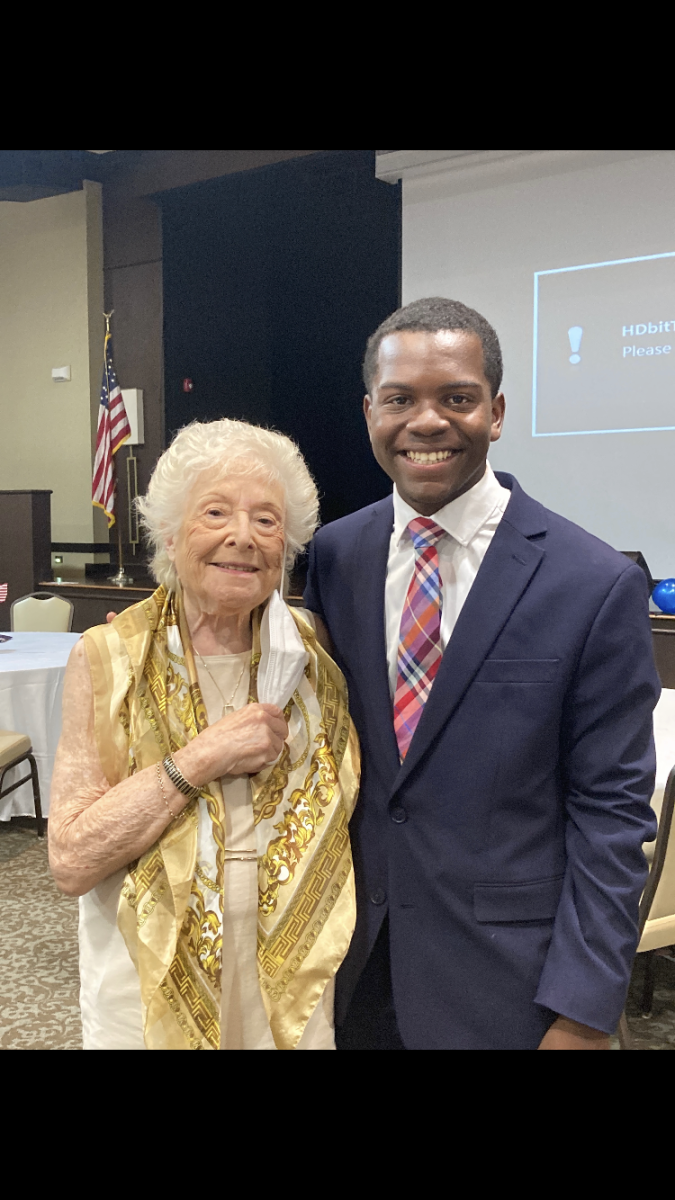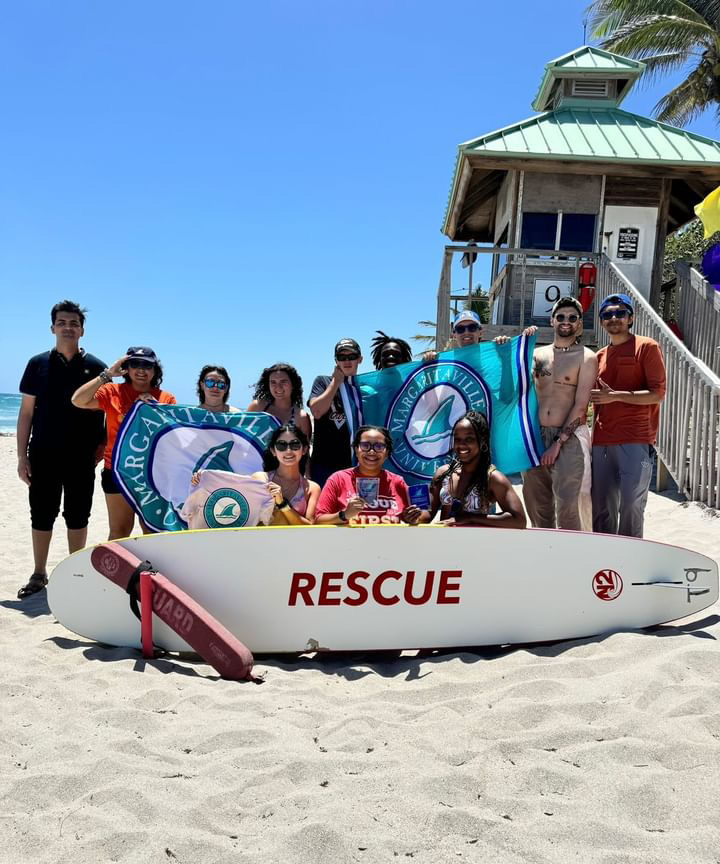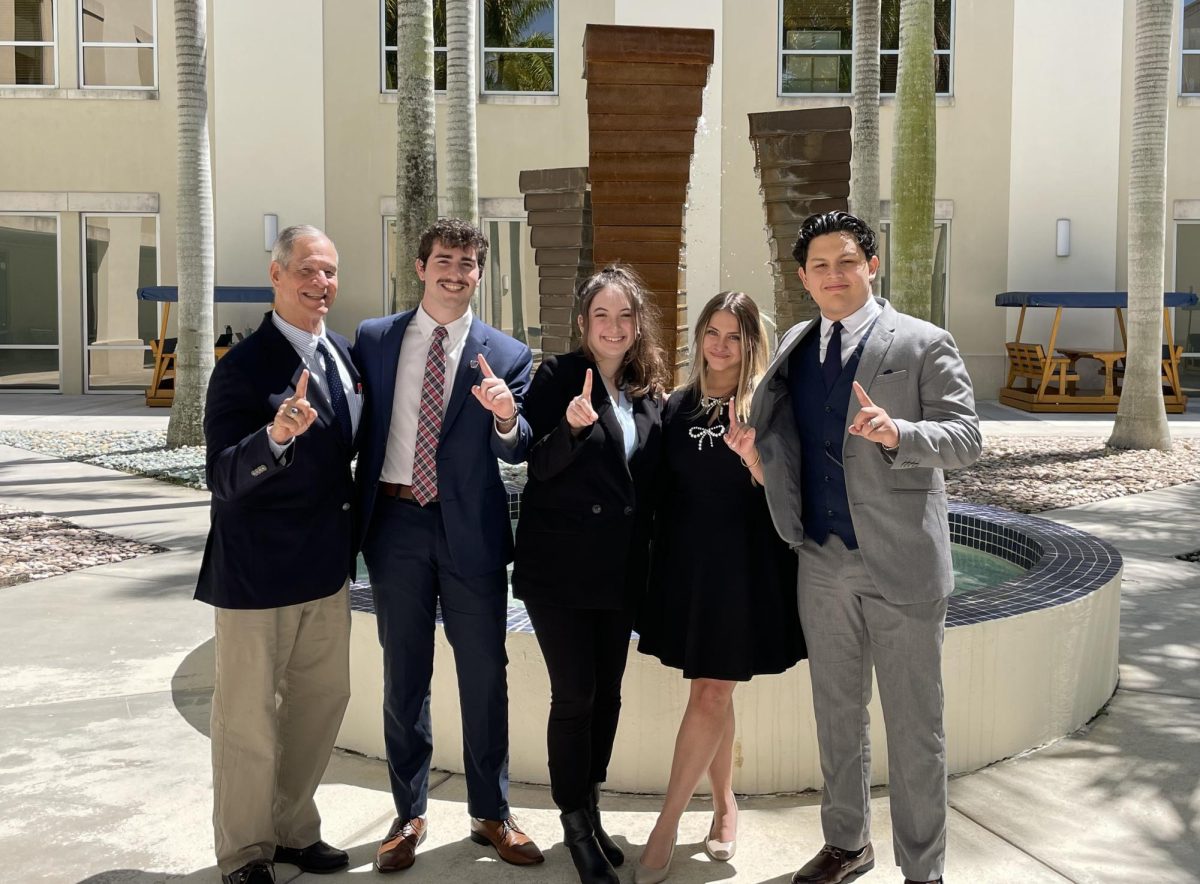
Tabitha Pennekamp spent days on end working on her 12 ceramic vessels. After all, she would be the only graduating Master of Fine Arts student. That meant getting a solo show as part of her thesis exhibition.
So Pennekamp went to work. And now she is showcasing her art in an exhibit called “Gaze to Discover” in the Ritter Art Gallery, where each of her vessels stands for a letter that will ultimately spell out a 12 letter phrase. It’s up to the viewer to decode the secret message, all while their perception is played with. Pennekamp told us how she managed to play with the viewers’ perception, what inspired her work, how the audience can interact with her art, and what happens when the show is over.
UP: How long did it take for you to create all of this?
Pennekamp: In total I spent 665 hours and 30 minutes. I started in August and I decided to do one piece a week. I did 12 vessels and a semester is 14 weeks. I was able to get them all done last semester, which is a real big accomplishment because if I spend around 60 hours making a piece, that’s on top of my school work, my teaching and eating and sleeping time. I pretty much lived at the studio. But it was all well worth it.
When did you decide you wanted to be an artist?
I was in the first grade. My teacher was really into arts and crafts. And I just remember always staying after class, helping her with projects and helping her get ready for other art projects to do for the whole class. And that was it.
How did you get chosen to display your art at the Ritter Art Gallery?
You have to do a features exhibition. Typically there is more than one person graduating at a time, so you have a collaborative show, but because I was the only one accepted for my year, it was a solo show. This isn’t usually the case.
What was the inspiration behind your exhibition?
Well, I chose ceramics as a medium because I really like my work to be for the person using it or viewing it. And ceramics is so hands on, making [it] like functional work. Anybody can use it and it can be part of your daily life. But I realized in a gallery setting, I can’t have that interaction or expect that kind of interaction, with the actual touching or feeling or just embracing ceramics. So I was trying to come up with ways for the viewers to interact with my work just the same, but not actually touching it.
How does it work when someone visits your exhibit?
When you first walk in there are show cards with the puzzle on them. As you look at the pieces and as you go along, each piece will represent one letter. Like all of the imagery on one piece will start with the same letter. And then you go to the next one. All the images will start with a different letter. And all the pieces spell out the phrase.
Why did you title your pieces with the number of hours you worked on them?
I titled them that way because I didn’t want to give the phrase away if I just titled it after the letter all the imagery on a specific piece started with. So I decided to give them arbitrary numbers, hoping that the numbers would serve as a catalog, like, “Oh, this is this one.” The viewer wouldn’t have to necessarily know that’s how many hours I spent working on them, but if you really did want to know, it would be right there.
So back to the secret message. How do you find out what it is if you get confused or something?
If you get confused and you go through the entire exhibit, you could just go all the way down to the right. Behind that wall there’s a key there. So if the viewer gets really confused, they can just look at the key.
Why did you choose the secret message that you did?
I want the viewer to look at art or to look at anything in life. The title of my show is “Gaze to Discover,” because I think, too often, people just pass by everything that’s around them, and they don’t pay attention to what something can be or what something is, and we just take the beauty of life for granted. What I’m trying to do is call attention to those little moments, and get excited about all the things you can see or recognize.You can relate to something that surrounds you.

















